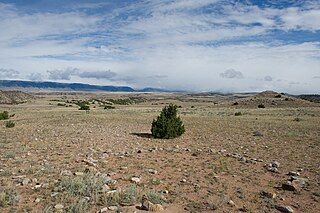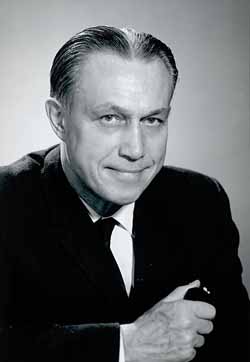
Browning is a former town and current unincorporated community in Glacier County, Montana, United States. It is the headquarters for the Blackfeet Indian Reservation and was the only incorporated town on the Reservation. The population was 1,018 at the 2020 census.
The Marias Massacre was a massacre of Piegan Blackfeet Native peoples which was committed by the United States Army as part of the Indian Wars. The massacre occurred on January 23, 1870, in Montana Territory. Approximately 200 Native people were killed, most of whom were women, children, and older men.

A tipi or tepee is a conical lodge tent that is distinguished from other conical tents by the smoke flaps at the top of the structure, and historically made of animal hides or pelts or, in more recent generations, of canvas stretched on a framework of wooden poles. The loanword came into English usage from the Dakota language and Lakota language.

The University of Montana (UMT) is a public research university in Missoula, Montana. UM is a flagship institution of the Montana University System and its second largest campus. UM reported 10,962 undergraduate and graduate students in the fall of 2018. It is classified among "R1: Doctoral Universities – Very high research activity" as of 2022.

The Blackfeet Nation, officially named the Blackfeet Tribe of the Blackfeet Indian Reservation of Montana, is a federally recognized tribe of Siksikaitsitapi people with an Indian reservation in Montana. Tribal members primarily belong to the Piegan Blackfeet band of the larger Blackfoot Confederacy that spans Canada and the United States.

James Phillip Welch Jr., who grew up within the Blackfeet and A'aninin cultures of his parents, was a Native American novelist and poet, considered a founding author of the Native American Renaissance. His novel Fools Crow (1986) received several national literary awards, and his debut novel Winter in the Blood (1974) was adapted as a film by the same name, released in 2013.

Earl Old Person was an American Indian political leader and the honorary lifetime chief of the Blackfeet Nation in Montana, United States.
Elouise Pepion Cobell, also known as Yellow Bird Woman, was a tribal elder and activist, banker, rancher, and lead plaintiff in the groundbreaking class-action suit Cobell v. Salazar (2009). This challenged the United States' mismanagement of trust funds belonging to more than 500,000 individual Native Americans. She pursued the suit from 1996, challenging the government to account for fees from resource leases.

Madison Buffalo Jump State Park is a Montana state park located seven miles south of the Interstate 90 interchange at Logan in Gallatin County, Montana in the United States. The park preserves a canyon cliff used by Native Americans as a buffalo jump, where herds of bison were stampeded over the cliff as an efficient means of slaughter. The main geographic features of the jump site remain largely unchanged since the days of the jumps. Archaeologists have found tons of bison bones buried at the base of the cliffs. They have also uncovered the remains of tipi villages.
Missoula College is the junior college of the University of Montana in Missoula, Montana. The college was founded in 1956 and became part of the University of Montana in 1994. It offers 35 programs including career, transfer, and technical programs. The five academic departments include the Department of Applied Computing and Electronics, Department of Industrial Technology, Department of Applied Arts and Sciences, Department of Business Technology, and Department of Health Professions. The college also provides workforce development for the region as well as dual credit courses for hundreds of high school students in the area, and works to support adults seeking new career opportunities or professional development. During the Fall 2010 semester, 2,444 students were enrolled at Missoula College.

The Payne Family Native American Center, located at the University of Montana in Missoula, Montana, is the first facility built exclusively for a department of Native American Studies and American Indian Student Services in the United States.

Tipi rings are circular patterns of stones left from an encampment of Post-Archaic, protohistoric and historic Native Americans. They are found primarily throughout the Plains of the United States and Canada, and also in the foothills and parks of the Rocky Mountains.

John Canfield Ewers was an American ethnologist and museum curator. Known for his studies on the art and history of the American Plains Indians, he was described by The New York Times as one of his country's "foremost interpreters of American Indian culture."

Jessie Spaulding Wilber was an American printmaker and educator.

Lily Gladstone is an American actress. Raised on the Blackfeet Reservation, Gladstone is of Piegan Blackfeet, Nez Perce, and European heritage. She earned critical acclaim for portraying Mollie Kyle, an Osage woman who survived the Osage Indian murders, in Martin Scorsese's crime drama film Killers of the Flower Moon (2023), receiving several accolades. She became the first Native American to win the Golden Globe Award for Best Actress in a Motion Picture – Drama and be nominated for the Academy Award for Best Actress.
Olga Ross Hannon was an art professor at Montana State College from 1921 to 1947. As an artist she is known for mountain landscape and Indian culture paintings.
Jessica Louise Donaldson Schultz Graham (1887–1976) was an English professor at Montana State College and social worker on Native reservations in Montana and Wyoming.

Mountain Chief was a South Piegan warrior of the Blackfoot Tribe. Mountain Chief was also called Big Brave (Omach-katsi) and adopted the name Frank Mountain Chief. Mountain Chief was involved in the 1870 Marias Massacre, signed the Treaty of Fort Laramie in 1868, and worked with anthropologist Frances Densmore to interpret folksong recordings.
Rosalyn LaPier is a Native American traditionally trained ethnobotanist, writer, professor and environmental historian. She is an enrolled member of the Blackfeet Tribe of Montana and Métis.













